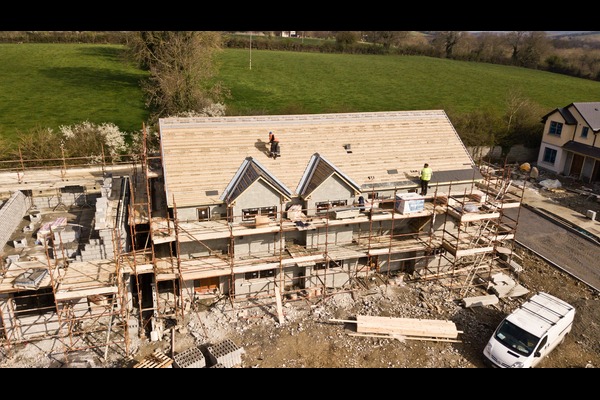Using a Bridging Loan for Property Development

Bridging finance is a short-term loan, typically arranged within a matter of days and repaid after a period of one to 18 months. As the name suggests, bridging loans are designed to ‘bridge’ financial gaps when significant sums of money are needed for urgent purchases or investments over the short term.
When might bridging finance be useful?
As a property investor or developer, there are instances in which a bridging loan could be the ideal financial product. Examples of these include the following:
Buying a property at auction with the intention of renovating and selling it at a profit
Using bridging finance to cover various project expenses, subsequently repaying the loan when the property is sold or refinanced
Any property development business encountering a period of limited cash flow could use a bridging loan to ‘bridge’ this temporary shortfall.
Bridging loans can also be secured against all types of properties (including dilapidated and uninhabitable properties), which major banks may refuse to finance.
What is the difference between a closed bridging loan and an open bridging loan?
The difference between open and closed bridging loans is whether the borrower has an exit strategy in place. If you know exactly when and how you will be repaying your loan, you can apply for a closed bridging loan with a fixed repayment date. If there is still some uncertainty as to your repayment plan, you can apply for an open-bridging loan with no exact fixed repayment date.
Closed bridging loans often have more competitive rates of interest and lower overall borrowing costs.
When does it need to be repaid?
An agreed-upon repayment date for the loan will be agreed upon with the lender during the application process. Typically, property development bridging finance is repaid when the property being financed is sold, let out, or moved onto a longer-term loan or mortgage.
How much does it cost?
Interest rates and overall borrowing costs vary in accordance with the requirements of the borrower and the policies of the lender. Monthly interest rates on competitive property development bridging finance start at less than 0.5%. The quicker you pay back your loan, the more you save.
Who is eligible?
Eligibility is assessed on the basis of the applicant’s current financial position, property development track record, and the nature and viability of the proposed project. The property they wish to secure the loan against will also be considered, as will their credit history and income level.
Maximum loan-to-value ratios of 80% or more are available with residential properties, though lenders often restrict themselves to 70% for commercial properties. If you have any questions or concerns regarding your eligibility or would prefer a loan with a higher LTV, discuss this with your broker before applying.
What additional costs apply with property development bridging finance?
Additional fees and levies vary from one lender to the next. Depending on whom you work with, your property development loan could be subject to administration fees, arrangement fees, completion fees, valuation fees, legal fees, security fees, early repayment fees, and so on.
How quickly can I access the funds I need?
It is often possible to complete the application process and access the money you need within a matter of days. Bridging finance provides an ideal alternative to complex and drawn-out property loans and mortgages when time is a factor.
Accelerating the process is simply a matter of ensuring you have all the documentation you need and can verify both your credibility and the viability of your project. All of which can be simplified with professional broker support.
Can I get a property development bridging finance with bad credit?
If your project is viable, your track record is exemplary, and your credit status is sound, poor credit need not stand in the way of competitive property development finance. Some bridging lenders are more than willing to take all aspects of their applicants’ cases into consideration, rather than basing their decisions purely on credit scores. It is essential to strategically target lenders who welcome poor credit applicants.
How much can I borrow for a property development project?
Theoretically, there are no limits in terms of how much you can borrow. Bridging finance for property development is generally available in sums starting from £75,000 and up, though with no upper limits. Eligibility and maximum loan allowances are calculated in accordance with the applicant’s financial situation, requirements, and proposed use of the funds.
How can I find out more about property development bridging finance?
Whether you have decided to go ahead or are simply considering a bridging finance application, it pays to consult with an independent broker ahead of time. Along with helping you understand the various options available, an established broker can ensure your applications are submitted only to the most appropriate lenders.
For more information or to discuss the potential benefits of property development bridging loans in more detail, contact a member of the team at UK Bridging Loans today.




 0116 402 7982
0116 402 7982